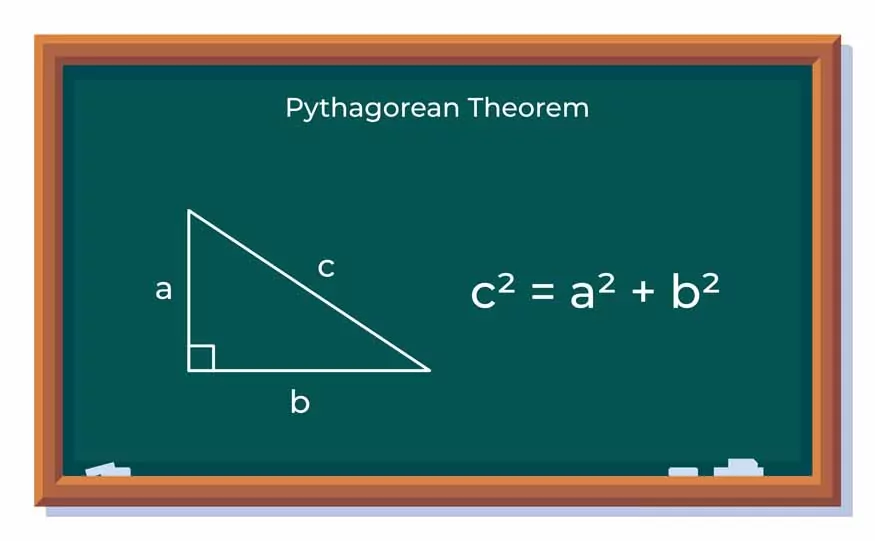Regardless of the landscape or industry you have chosen for your professional career, you must have studied basic mathematics, especially geometry, during your school days. You must have also come across various geometrical theorems and formulas during your early studies. The Pythagorean theorem is no exception. Many people may consider it a vague concept because they are unaware of its real-life applications.
However, this theorem finds various applications in real life. This article explains the Pythagorean theorem, its real-life applications, and the easier way to perform calculations according to this fundamental mathematical concept. You must read it if you are interested in learning more about the usefulness of this theorem and its applications. Further details are given below.
What is the Pythagorean Theorem?
Before we explore the real-life application of the Pythagorean theorem, it is essential to understand its purpose and the formula required for calculation according to its statement. So, the Pythagorean theorem is used to generate a mathematical relation between various sides of the right-angled triangle. This theorem is only usable for calculating the lengths of sides of a right-angled triangle, also called Pythagorean Triplets. A simple formula to reflect the statement of this theorem is:
The letter ‘c’ in the aforementioned formula denotes the hypotenuse of a right-angled triangle, while ‘a’ and ‘b’ represent altitude and base, respectively. The theorem states that the square of the longest side of a right-angled triangle, termed hypotenuse, can be measured by adding the square of the other sides. The length of other sides, such as base and altitude, can be measured using variations of the Pythagorean formula.
FOR INFORMATIVE CONTENT VISIT.. : Christmas gifts
Why is the Pythagorean Theorem Useful in Real Life?
This section outlines multiple real-life applications of the Pythagorean theorem, making it a highly useful mathematical concept. Understanding these applications will help you understand its usefulness in real life.
Electronics and Telecom
The Pythagorean theorem is frequently used in electronic and telecom fields. It is used by electricians and engineers to determine the shortest route between components of PCBs (Printed Circuit Boards) to avoid signal loss, minimize resistance, and ensure optimum performance of the overall circuit board. It is also used to calculate the right height and position of antennas.
Transportation and Logistics
Roads and rail routes are built with an objective to ensure safest journey between two points in the shortest time possible. Civil engineers determine the shortest route between 2 distinct points with the help of the Pythagorean theorem to achieve this objective. Companies responsible for handling logistics at various levels also use it to determine the shortest route between two points to deliver parcels in the minimum possible time.
Architecture and Construction
Civil engineers and architects responsible for constructing buildings and other structures also leverage the Pythagorean theorem to perform calculations. Maintaining a right angle during the construction of larger buildings is essential to ensure they don’t lean down like Pisa Tower. They also use it to make the corners perfectly square and walls accurately perpendicular to the floor. Simply put, builders, engineers, and architects must ensure a perfect right angle during construction, and they do it by leveraging the Pythagorean theorem.
Computer and Gaming Graphics
You may find it surprising to learn that the Pythagorean theorem is also used in the IT (Information Technology) landscape. However, it is true, and you will see its frequent use in computer and gaming graphics. Game designs are mostly crafted after performing calculations using this theorem. Its involvement leads to realistic experiences, lifelike interactions, and accurate interactions in virtual environments.
Display Size Measurements
Another real-life application of the Pythagorean theorem is the accurate measurement of display sizes of various devices, including computer monitors, smartphone screens, and LED TVs. Screen size is generally measured in inches, such as 6, 32, 40, or even larger. However, display sizes are actually the length of the hypotenuse or diagonal. The Pythagorean theorem formula is used to measure display sizes diagonally.
How Do You Make Easier Real-Life Pythagorean Calculations?
It is worth mentioning that we have performed basic Pythagorean calculations during our studies. However, real-life calculations are way different from those used for academics. Calculations for real-life applications either feature huge or slight measurements. Handling such values and performing accurate calculations using the Pythagorean theorem manually becomes quite tricky. Such calculations are also prone to mistakes.
A better way to handle such complex calculations is by using a dedicated tool. You can easily find an online Pythagorean theorem calculator that can help you easily find relations between various sides of a right-angled triangle, whether the lengths of these sides are extremely large or small. You only need to search for a reliable Pythagorean theorem calculator capable of delivering accurate results online and input known values. This online tool will determine the unknown value in a matter of seconds without requiring much effort and time.
In the End
Pythagorean theorem is a highly useful mathematical concept with various real-life applications. We have discussed a few of them in this article to help you understand its usefulness. We have also discussed an easier method to perform calculations according to this theorem. Hopefully, you will find this article useful and use its takeaways in your practical life!

















